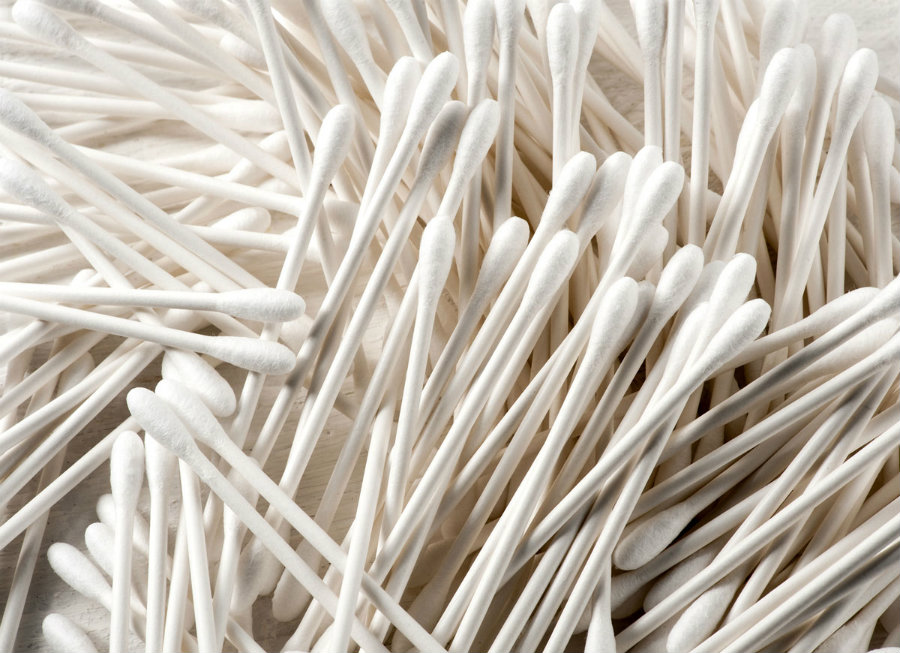A new study from Nationwide Children’s Hospital shows that around 12,500 kids are treated each year for injuries caused by cotton swabs. The findings show that 34 children are injured daily by cotton tip applicators in the United States.
In most of the cases the cotton swabs were used for cleaning, but according to the researchers, it is just not worth the risks.

Researchers noted that there are safer ways to clean children’s ears and recommended that parents should not use them on their kids. The study was published in the Journal of Pediatrics.
Most children were injured when trying to clean their ears with cotton swabs
According to Kris Jatana, senior author of the study from NCH’s Department of Pediatric Otolaryngology, the two biggest misconceptions she often hears as an ear specialist are that the ear canals need to be cleaned in the home setting, and that cotton tip applicators must be used to clean them. Jatana said both of those statements are incorrect.
“The ear Canals are usually self-cleaning,” said Jatana in a statement published on the Nationwide Children’s Hospital website. “Using cotton tip applicators to clean the ear canal not only pushes wax closer to the ear drum, but there is a significant risk of causing minor to severe injury to the ear.”
Jatana and other researchers clarified on the study that cotton tip applicators are bad, especially when used in children. Researchers National Electronic Injury Surveillance System (NEISS) information collected between 1990 and 2010, in which they found 263,000 cases of kids –under the age of 18- who were treated in an emergency room for injuries caused by a cotton swab.

The study found that 73 percent of the injuries occurred as a result of using cotton swabs to clean the ears, 10 percent occurred while kids played with cotton tip applicators, and 9 percent when children fell while having a cotton tip applicator in their ear. Researchers noted that 77 percent of the injuries happened when the child was using the applicators by themselves, 16 percent occurred when applied by a parent, and 6 percent of the injuries took place when a sibling used the cotton swabs. Two-thirds of the patients were younger than eight years of age, and patients aged 0 to 3 accounted for 40 percent of all injuries.
Number of injuries caused by cotton swabs decreased, but not enough
According to the study, the most common injuries were foreign body sensation, which counted for 30 percent of the accidents. Perforated ear drum injuries accounted for 25 percent of the patients, and 23 percent had soft tissue injuries. Foreign body sensation was the most common diagnosis in patients aged between 8 and 17 years of age, while perforated ear drum was the most common among kids younger than 8 years old.
The study said that 99 percent of the patients were treated and released, although the remaining one percent suffered more severe damages to the eardrum, inner ear or hearing bones, which led to dizziness, problems with balance and permanent hearing loss.
“While the number of overall injuries from cotton tip applicators did decrease during the 21 years we looked at in our study, it is still unacceptably high,” said Jatana. “These products may seem harmless, but this shows how important it is that they not be used to clean ears.”

Doctors say there are only two safe ways to clean your ears
Researchers said that ears are self-cleaning, but some people may want to clean their ears regardless, which is why some experts point safe ways to clean them. According to Michael Rensink and Robert Martin, ear specialists who published recommendations in The Hearing Journal, there are two ways to clean your ears.
The first is by using a clean, healthy ear tissue to clean it, as sometimes dead skin can accumulate in ears and attract moisture as well as serve as breeding ground for bacteria and fungus. The second way is to do it yourself, applying the only substance for removal of wax approved by the FDA: carbamide peroxide. Peroxide is found in all over-the-counter earwax removal products on the market.
“This thick liquid (peroxide) is put into the ear canal with a dropper and then the ear is rinsed to remove the peroxide and any wax,” said Rensink and Martin, according to NPR.
Over-the-counter ear drops are made up of peroxide solutions and oil, which is why some doctors may recommend putting a few drops of olive or baby oil in their ears sometimes, but cotton swabs are definitely off the table for researchers.
Source: Nationwide Children’s Hospital
